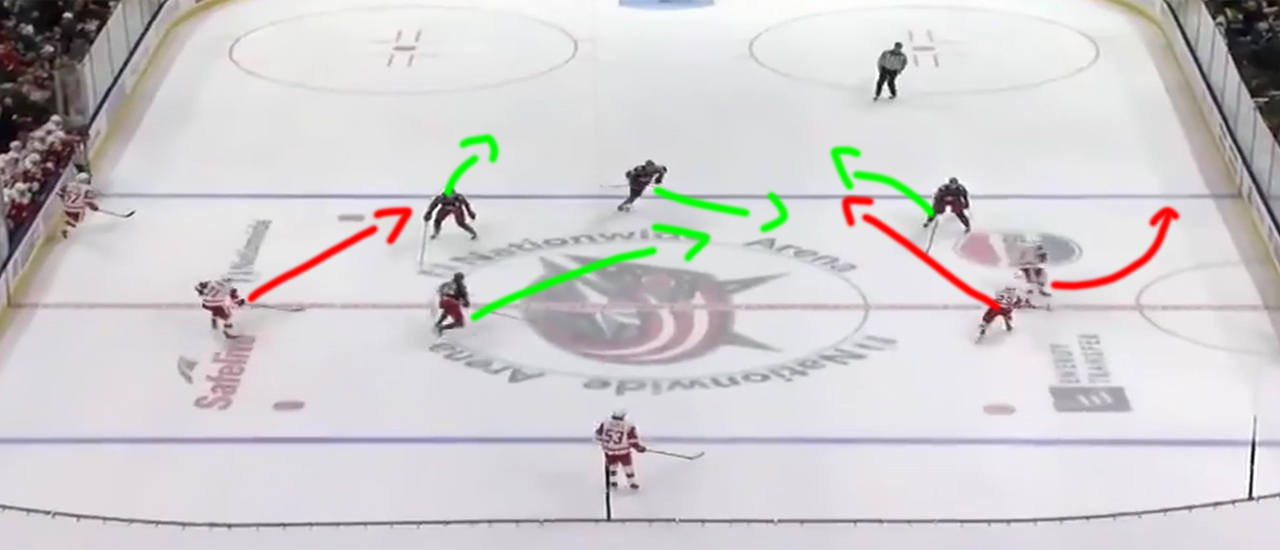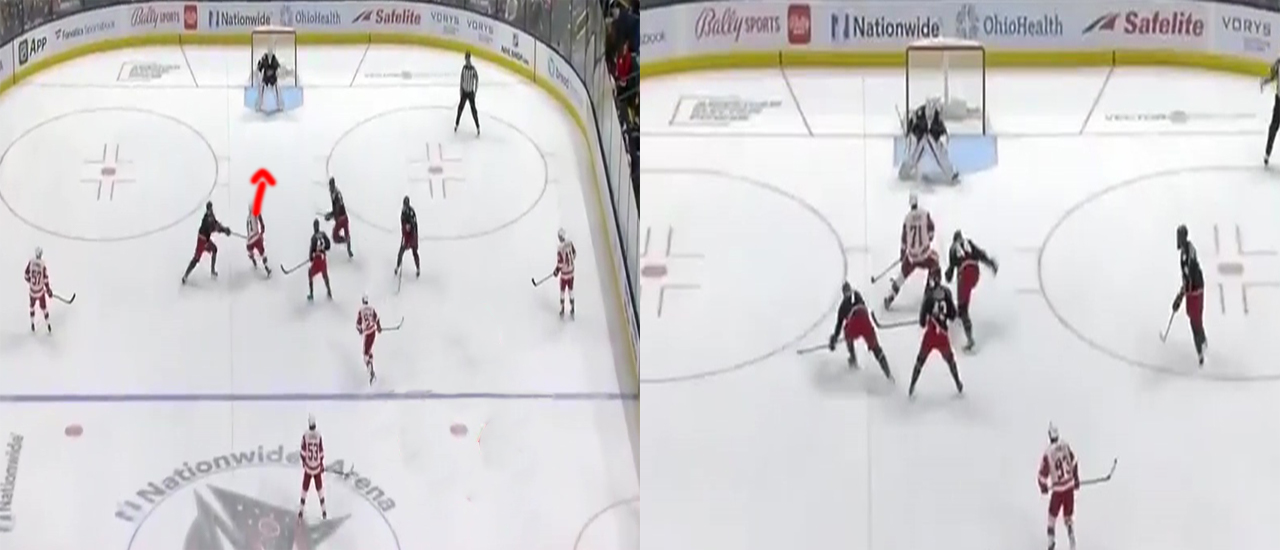Converting on the power play is a game changer and thus being able to exploit that man advantage is a critical part of the game that can lead to easy goals.
The power play is one of hockey's most crucial sequences, providing a team with a man advantage and the opportunity to exert intense pressure on the opposition. Ideally, ending up in a goal. In this article, we'll analyze a sequence featuring the Detroit Red Wings on the power play against the Columbus Blue Jackets. This particular sequence is an excellent example of how to exploit the man advantage during zone entry to create optimal space.
As seen in the accompanying video, the Red Wings executed a flawless zone entry that led to a power-play goal. Utilizing their man advantage, they created space for Dylan Larkin, who ultimately finished off the play with a goal. Let's break down how they accomplished this.
As Moritz Seider circles behind his own net to restart the play, he surveys the ice to assess his options. To his left, he has Dylan Larkin streaking up the wing, closely marked by Alexander Texier. On his right, Alex DeBrincat is unguarded and presents the obvious choice for a pass. Recognizing the situation, Seider makes the optimal decision and sends the puck to a wide-open DeBrincat.
As this play unfolds, the other Red Wings players start to position themselves strategically. David Perron drifts to the left side of the ice while Shayne Gostisbehere moves to the right. This calculated positioning aims to funnel the defensive coverage of the Blue Jackets, forcing them to fall back and protect the center of the ice. As a result, the Red Wings gain valuable space on the wings to maneuver.

At this point, it's evident that the Blue Jackets' players have clustered more towards the center of the ice, giving the Red Wings players extra space to operate. Gostisbehere continues his skate to the right, looping back toward the Blue Jackets' blue line offering a simple pass to DeBrincat. Simultaneously Larkin is skating towards the center of the Blue Jackets zone. The choice on how to proceed is now on DeBrincat, who has a few options. He could drop the puck to Gostisbehere allowing an easy set up in the zone. He could dump it into the far left corner of the zone allowing Perron to recover the puck or he can use the extra space that he has and continue skating.
DeBrincat notices that he's drawing the attention of three of the BlueJackets defense. He has both Texier and Erik Gudbranson that is skating towards him and Ivan Provorov who is already in front of him. By seeing this he makes the decision to continue skating towards the zone and continue drawing the pressure of the three Blue Jackets.

By drawing the attention of three Blue Jackets players, DeBrincat effectively opens up a clear lane through the center of the ice. Larkin seizes this opportunity, driving into the open space and positioning himself to receive a pass the pass.
This was a pivotal error on the part of the Blue Jackets, and especially Texier. By failing to either mark Larkin or cover the center of the ice, Texier opened the door for the sequence that followed, which proved costly.
DeBrincat expertly delivers the puck ahead to Larkin, enabling him to outmaneuver two of the three defenders and leaving Provorov as the last line of defense. Provorov's only viable option is to make an immediate dive to disrupt the play, but he fails to realize this, leaving Larkin virtually unchallenged.

With space to work and momentum on his side, all Larkin needs to do is shield the puck with his body. He sildes past Provorov and even draws a hooking penalty from Sean Kuraly, who makes a desperate attempt to halt his progress. Now, Larkin finds himself in a one-on-one showdown with the goaltender.

Executing a swift side-to-side move, Larkin compels goaltender Spencer Martin to widen his stance. Seizing the opportunity, he deftly slides the puck between Martin's legs, netting a textbook goal.
The sequence underlines the pivotal role that a well-executed zone entry plays in the game. Recalling Texier's lapse in coverage, even if he had effectively marked Larkin, DeBrincat had a secondary option in Gostisbehere, who was positioned for an unobstructed entry into the zone. Once settled in the zone, the Red Wings could then initiate their power play setup, cycling the puck to wear down the penalty kill unit and eventually create high-danger scoring opportunities. Achieving this level of coordinated play can be the difference-maker in capitalizing on the power play, setting the stage for potential goals.
